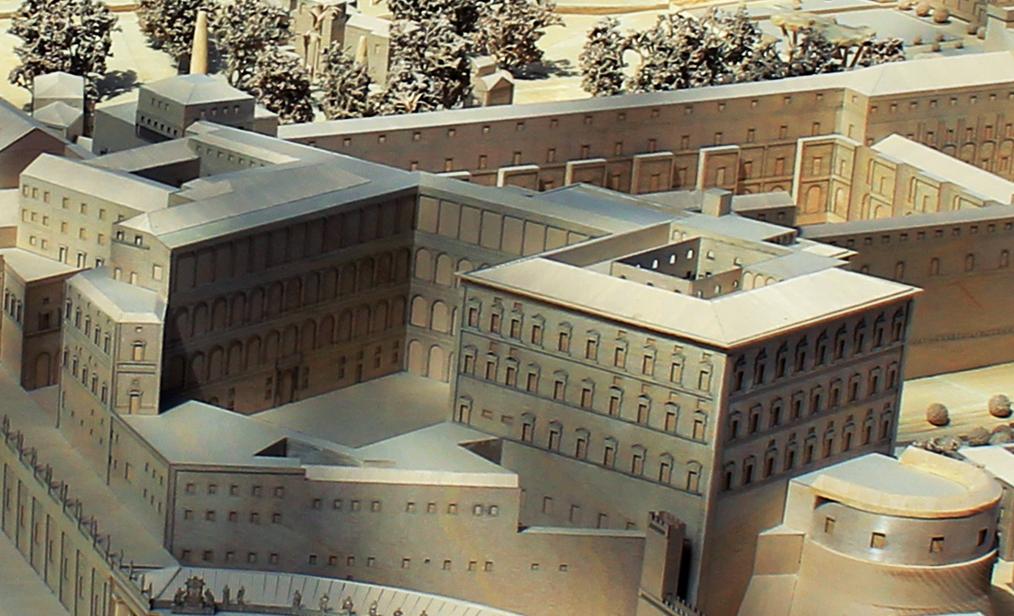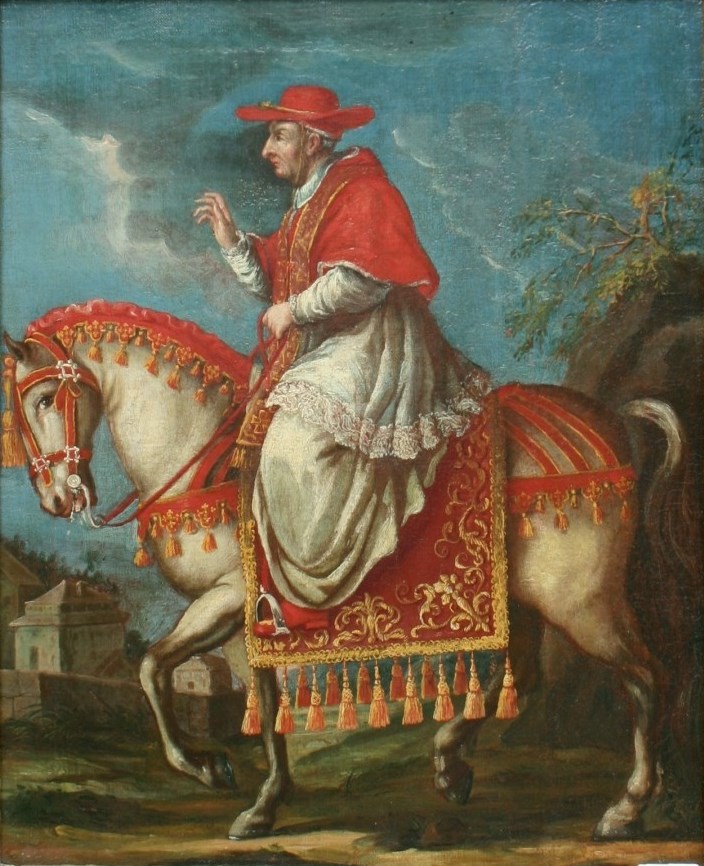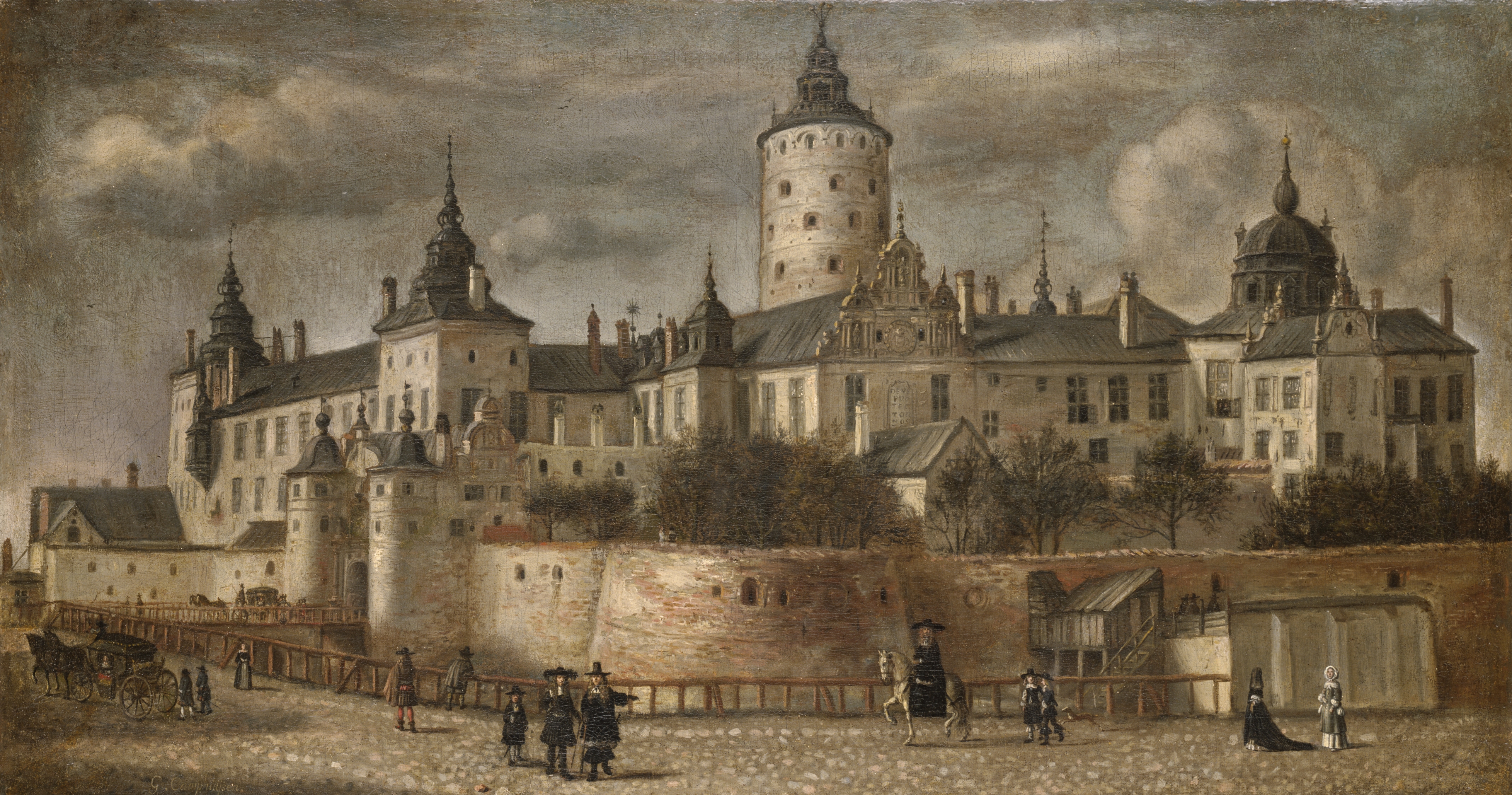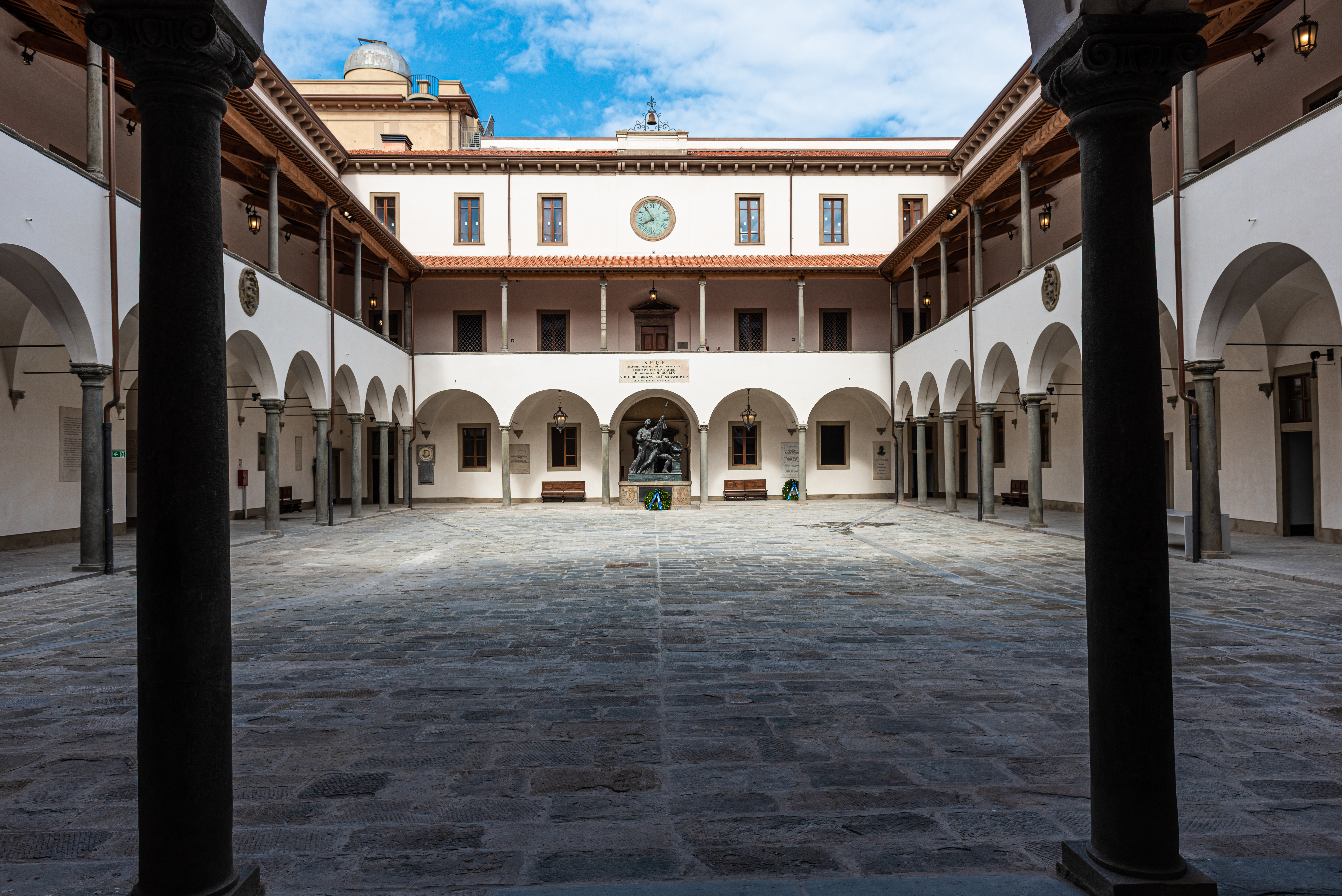|
Henry Noris
Henry Noris (29 August 1631 – 23 February 1704), or Enrico Noris, was an Italian church historian, theologian and Cardinal. Biography Noris was born at Verona, and was baptized with the name Hieronymus (Girolamo). His ancestors were Irish. His father, Alessandro had written a work on the German wars. At the age of fifteen he was sent to study under the Jesuits at Rimini, and there entered the novitiate of the Hermits of Saint Augustine, OESA, where he took the name ″Enrico″. He caught the attention of his Order's Father Assistant of Italy, Fr. Celestino Bruni, who recommended him to the attention of the Father General, Fr. Fulgencio Petrelli (1645-1648). After his probation he was sent to Rome to study theology. He lived in his Order's house at Sant'Agostino, in the company of a number of scholars in secular and ecclesiastical history, including Fr. Christian Lupus, OESA. He taught the sacred sciences at his order's houses in Pesaro, Perugia, and Padua. There he comp ... [...More Info...] [...Related Items...] OR: [Wikipedia] [Google] [Baidu] |
His Eminence
His Eminence (abbreviation H.Em. or H.E. or HE) is a style (manner of address), style of reference for high nobility, still in use in various religious contexts. Catholicism The style remains in use as the official style or standard form of address in reference to a cardinal (Catholicism), cardinal of the Catholic Church, reflecting his status as a Prince of the Church. A longer, and more formal, title is "His (or Your when addressing the cardinal directly) Most Reverend Eminence". Patriarchs of Eastern Catholic Churches who are also cardinals may be addressed as "His Eminence" or by the style particular to Catholic patriarchs, His Beatitude. When the Grand master (order), Grand Master of the Sovereign Military Order of Malta, the head of state of their sovereign territorial state comprising the island of Malta until 1797, who had already been made a Reichsfürst (i.e., prince of the Holy Roman Empire) in 1607, became (in terms of honorary order of precedence, not in the act ... [...More Info...] [...Related Items...] OR: [Wikipedia] [Google] [Baidu] |
Padua
Padua ( ; it, Padova ; vec, Pàdova) is a city and ''comune'' in Veneto, northern Italy. Padua is on the river Bacchiglione, west of Venice. It is the capital of the province of Padua. It is also the economic and communications hub of the area. Padua's population is 214,000 (). The city is sometimes included, with Venice (Italian ''Venezia'') and Treviso, in the Padua-Treviso-Venice Metropolitan Area (PATREVE) which has a population of around 2,600,000. Padua stands on the Bacchiglione, Bacchiglione River, west of Venice and southeast of Vicenza. The Brenta River, which once ran through the city, still touches the northern districts. Its agricultural setting is the Venetian Plain (''Pianura Veneta''). To the city's south west lies the Colli Euganei, Euganaean Hills, praised by Lucan and Martial, Petrarch, Ugo Foscolo, and Percy Bysshe Shelley, Shelley. Padua appears twice in the UNESCO World Heritage List: for its Botanical Garden of Padua, Botanical Garden, the most anc ... [...More Info...] [...Related Items...] OR: [Wikipedia] [Google] [Baidu] |
Vatican Library
The Vatican Apostolic Library ( la, Bibliotheca Apostolica Vaticana, it, Biblioteca Apostolica Vaticana), more commonly known as the Vatican Library or informally as the Vat, is the library of the Holy See, located in Vatican City. Formally established in 1475, although it is much older—it is one of the oldest libraries in the world and contains one of the most significant collections of historical texts. It has 75,000 codices from throughout history, as well as 1.1 million printed books, which include some 8,500 incunabula. The Vatican Library is a research library for history, law, philosophy, science, and theology. The Vatican Library is open to anyone who can document their qualifications and research needs. Photocopies for private study of pages from books published between 1801 and 1990 can be requested in person or by mail. Pope Nicholas V (1447–1455) envisioned a new Rome with extensive public works to lure pilgrims and scholars to the city to begin its transf ... [...More Info...] [...Related Items...] OR: [Wikipedia] [Google] [Baidu] |
Girolamo Casanata
Girolamo Casanate (historic spelling variations include Casanata and Casanatta) (13 February 1620 in Naples – 3 March 1700 in Rome) was an Italian Cardinal. Biography His father, Tommaso Casanatta, was a member of the supreme council of the Kingdom of Naples. Girolamo studied law at the university of his native town and practised in the courts for some time. Eventually he gave up the promises of a secular career and entered the service of the Church, in deference to the advice of Cardinal Pamphili whom he had met on a visit to Rome. When that cardinal became pope as Innocent X, Casanate was made private chamberlain and soon advanced rapidly in the ecclesiastical career, becoming in turn Governor of Sabina, Fabriano, Ancona, and Camerino. In the last-named city he became a close friend of its bishop, Emilio Altieri, afterwards Pope Clement X. In 1658 Pope Alexander VII sent him as inquisitor to Malta, whence he was shortly recalled to Rome and made prelate of the ''Consulta' ... [...More Info...] [...Related Items...] OR: [Wikipedia] [Google] [Baidu] |
Apostolic Palace
The Apostolic Palace ( la, Palatium Apostolicum; it, Palazzo Apostolico) is the official residence of the pope, the head of the Catholic Church, located in Vatican City. It is also known as the Papal Palace, the Palace of the Vatican and the Vatican Palace. The Vatican itself refers to the building as the Palace of Sixtus V, in honor of Pope Sixtus V, who built most of the present form of the palace. The building contains the papal apartments, various offices of the Catholic Church and the Holy See, private and public chapels, Vatican Museums, and the Vatican Library, including the Sistine Chapel, Raphael Rooms, and Borgia Apartment. The modern tourist can see these last and other parts of the palace, but other parts, such as the Sala Regia (Vatican), Sala Regia (Regal Room) and Cappella Paolina, had long been closed to tourists, though the Sala Regia allowed occasional tourism by 2019. The Scala Regia (Vatican), Scala Regia (Regal Staircase) can be viewed from one end and used ... [...More Info...] [...Related Items...] OR: [Wikipedia] [Google] [Baidu] |
Pope Benedict XIII
Pope Benedict XIII ( la, Benedictus XIII; it, Benedetto XIII; 2 February 1649 – 21 February 1730), born Pietro Francesco Orsini and later called Vincenzo Maria Orsini, was head of the Catholic Church and ruler of the Papal States from 29 May 1724 to his death in February 1730. A Dominican friar, Orsini focused on his religious responsibilities as bishop rather than on papal administration. Orsini's lack of political expertise led him to increasingly rely on an unscrupulous secretary (Cardinal Niccolò Coscia) whose financial abuses ruined the papal treasury, causing great damage to the Church in Rome. In the process towards sainthood, his cause for canonization opened in 1755, but it was closed shortly afterwards. It was reopened on 21 February 1931, but it was closed once again in 1940. It was opened once more on 17 January 2004, with the official process commencing in 2012 and concluding later in 2017. He now has the posthumous title of Servant of God. Early life He was ... [...More Info...] [...Related Items...] OR: [Wikipedia] [Google] [Baidu] |
Queen Christina Of Sweden
Christina ( sv, Kristina, 18 December (New Style) 1626 – 19 April 1689), a member of the House of Vasa, was Queen of Sweden in her own right from 1632 until her abdication in 1654. She succeeded her father Gustavus Adolphus upon his death at the Battle of Lützen in 1632, but began ruling the Swedish Empire when she reached the age of eighteen in 1644. The Swedish queen is remembered as one of the most learned women of the 17th century. She was fond of books, manuscripts, paintings, and sculptures. With her interest in religion, philosophy, mathematics, and alchemy, she attracted many scientists to Stockholm, wanting the city to become the "Athens of the North". The Peace of Westphalia allowed her to establish an academy or university when and wherever she wanted. In 1644, she began issuing copper in lumps as large as fifteen kilograms to serve as currency. Christina's financial extravagance brought the state to the verge of bankruptcy, and the financial difficulties cau ... [...More Info...] [...Related Items...] OR: [Wikipedia] [Google] [Baidu] |
Pope Benedict XIV
Pope Benedict XIV ( la, Benedictus XIV; it, Benedetto XIV; 31 March 1675 – 3 May 1758), born Prospero Lorenzo Lambertini, was head of the Catholic Church and ruler of the Papal States from 17 August 1740 to his death in May 1758.Antipope Benedict X, Pope Benedict X (1058–1059) is now considered an antipope. At the time, however, this status was not recognized by church historians, and so the tenth legitimate pontiff by this name is the one who took the official name Pope Benedict XI, Benedict XI (1303–1304). This has advanced the numbering of all subsequent Popes Benedict by one. Popes Benedict XI–XVI are therefore the tenth through fifteenth popes by that name. Perhaps one of the best scholars to sit on the papal throne, yet often overlooked, he promoted scientific learning, the Baroque arts, reinvigoration of Thomism, and the study of the human form. Firmly committed to carrying out the decrees of the Council of Trent and authentic Catholic teaching, Benedict ... [...More Info...] [...Related Items...] OR: [Wikipedia] [Google] [Baidu] |
Spanish Inquisition
The Tribunal of the Holy Office of the Inquisition ( es, Tribunal del Santo Oficio de la Inquisición), commonly known as the Spanish Inquisition ( es, Inquisición española), was established in 1478 by the Catholic Monarchs, King Ferdinand II of Aragon and Queen Isabella I of Castile. It began toward the end of the Reconquista and was intended to maintain Catholic orthodoxy in their kingdoms and to replace the Medieval Inquisition, which was under Papal control. It became the most substantive of the three different manifestations of the wider Catholic Inquisition along with the Roman Inquisition and Portuguese Inquisition. The "Spanish Inquisition" may be defined broadly as operating in Spain and in all Spanish colonies and territories, which included the Canary Islands, the Kingdom of Naples, and all Spanish possessions in North, Central, and South America. According to modern estimates, around 150,000 people were prosecuted for various offences during the three-century ... [...More Info...] [...Related Items...] OR: [Wikipedia] [Google] [Baidu] |
Michel Baius
Michael Baius (151316 September 1589) was a Belgium, Belgian theology, theologian. He formulated the school of thought now known as Baianism. Life He was born at Meslin L'Eveque near Ath in Hainaut as Michel De Bay, the son of Jean de Bay, a farmer. De Bay studied humanities in Brugelette and in Enghien and in 1533 he began studying philosophy at the Grand College het Varken of Old University of Leuven, Leuven University. From 1535 he also studied theology at the Pope's College, Leuven, Pope Adrian VI College.Sollier, Joseph. "Michel Baius." The Catholic Encyclopedia Vol. 2. New York: Robert Appleton Company, 1907. 26 Jan. 2021 He was an excellent student and was ordained a priest in 1542, and was appointed director of the Jan Standonck, Standonck-College in Leuven. In 1544 De Bay obtained his ... [...More Info...] [...Related Items...] OR: [Wikipedia] [Google] [Baidu] |
Jansenius
Cornelius Jansen (, ; Latinized name Cornelius Jansenius; also Corneille Jansen; 28 October 1585 – 6 May 1638) was the Dutch Catholic bishop of Ypres in Flanders and the father of a theological movement known as Jansenism. Biography He was born of humble Catholic parentage at Acquoy (then in the province of Holland, now in Gelderland), the Netherlands. In 1602 he entered the University of Leuven, then in the throes of an ideological conflict between the Jesuit – or scholastic – party and the followers of Michael Baius, who swore by St. Augustine. Jansen ended by attaching himself strongly to the latter "Augustinian" party, and presently made a momentous friendship with a like-minded fellow-student, Jean du Vergier de Hauranne, afterwards ''Abbé de Saint-Cyran''. After taking his degree he went to Paris, partly to improve his health by a change of scene, partly to study Greek. Eventually he joined Du Vergier at his country home near Bayonne, and spent some years tea ... [...More Info...] [...Related Items...] OR: [Wikipedia] [Google] [Baidu] |
University Of Pisa
The University of Pisa ( it, Università di Pisa, UniPi), officially founded in 1343, is one of the oldest universities in Europe. History The Origins The University of Pisa was officially founded in 1343, although various scholars place its origins in the 11th century. It is certain, however, that from the middle of the 12th century Pisa had a “Universitas” in the original sense of the word, that is, a group of students who gathered around masters. It was during this period that Leonardo Fibonacci was born and worked. He was one of the greatest mathematicians in history who, through his work, synthesized the spirit and processes of Greek geometry and the tools of Arabic mathematics for the first time in Europe. The papal seal “In Supremae dignitatis”, issued by Pope Clement VI on 3 September 1343, granted the Studium in Pisa the title of Studium Generale with various exclusive privileges, making it universally recognised. In medieval times, the Studium Generale wa ... [...More Info...] [...Related Items...] OR: [Wikipedia] [Google] [Baidu] |








